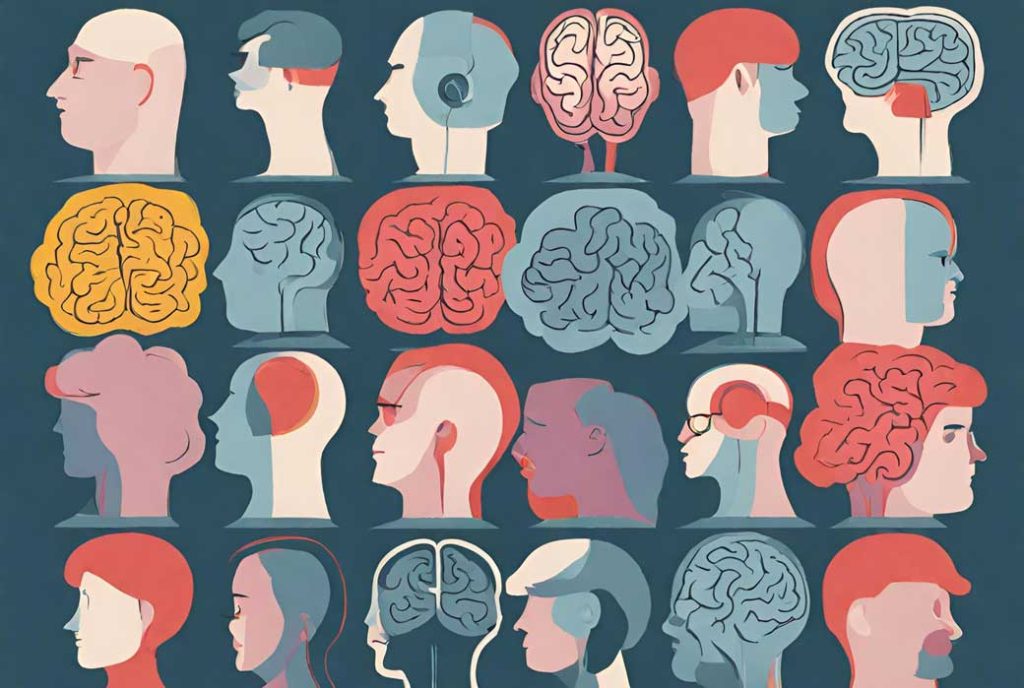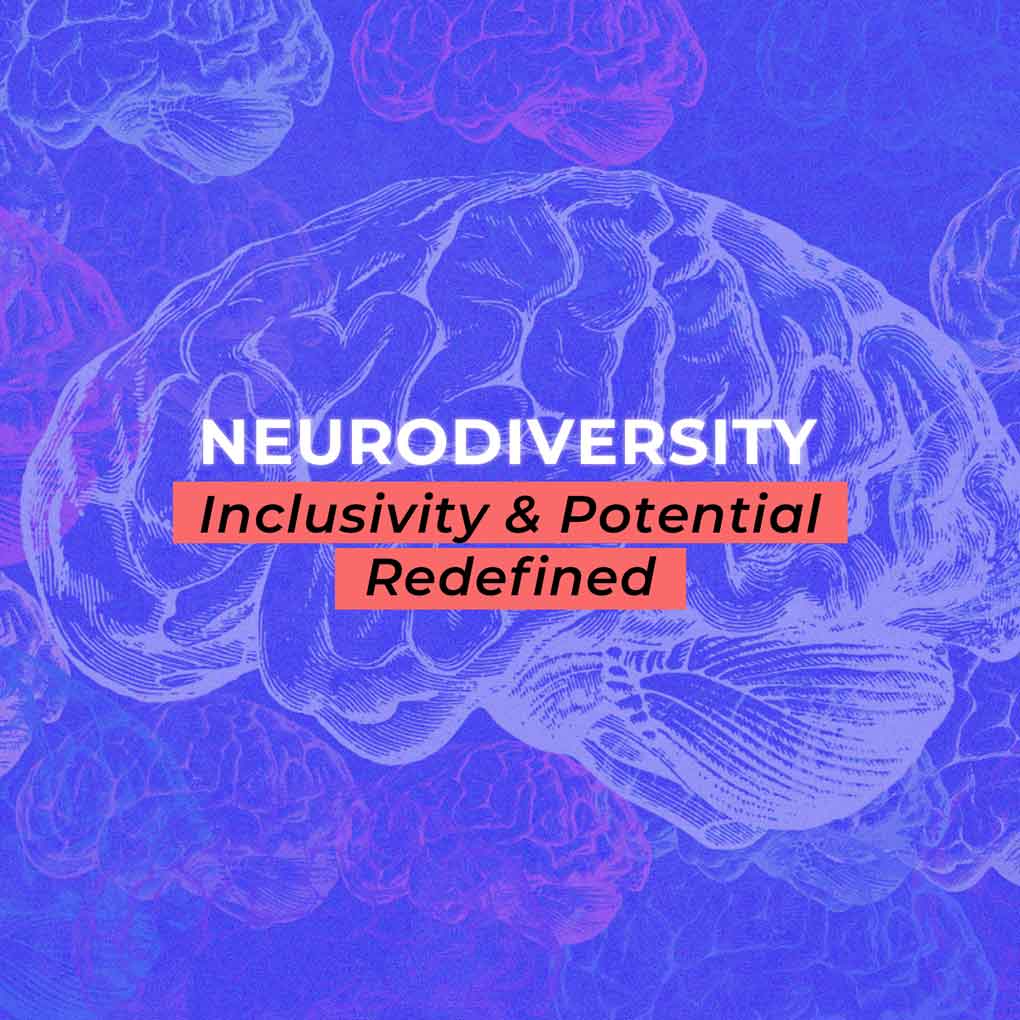CATEGORIES
#Careers #DEI #Work CultureOverview:
-
- Neurodivergence is a psychological term referring to the natural variability of the human mind in processing information.
- Since the human mind is unique, neurodivergence is not an abnormality but rather a spectrum of variable reactions to stimuli.
- Neurodiverse teams offer a number of advantages including increased innovation, higher skill set accumulation, and flexibility for all team members to be themselves.
- Creating a workplace that is cohesive for people with different cognitive abilities requires reimagining work relationships and formal structures.
- Inclusion and celebrating individuality benefit all.
Diversity and inclusion are important to building a successful and futuristic organization. This is not new news. Around the world, workplaces have been trying to incorporate greater diversity into their practices to tap into the growing and much-needed trend of equity and inclusion. Steadily, stakeholders are realizing that having a diverse workforce is an asset that creates strong, integrated, and competitive teams. However, this conversation needs to now be taken to the next level, to include people who have been erased from the picture due to their differences for a long time now. The talk about DEI (diversity, equity, and inclusion) needs to go beyond the physical diversity of race and sex, for instance, and take into consideration differences in perception style, mental abilities, and cognitive processes.
What Is Neurodivergence?
Neurodivergence is a psychological term referring to the natural variability of the human mind in processing information. It encompasses neurological structures and mental processes and recognizes the different ways the brain works. The neurodivergent spectrum includes people with conditions such as autism, dyslexia, and ADHD (attention deficit hyperactivity disorder). The term highlights the different abilities people on the spectrum have from “neurotypicals,” or those individuals whose neurological activity is similar to that of the majority and within the expected range of variations.
Everyone Is Different
Psychology, philosophy, and the physical sciences all agree on one fact: Every human is distinct from another. We are all different, and that is the uniqueness of living beings. In such a unique world, the idea of typical or normal cannot be strictly defined. If there are no actions that can be exactly the same, understanding neurodivergence as an abnormality is not accurate or rational.
Studies show that almost 15-20% of the population is neurodivergent. The actual number could be much higher, as most people live their lives undiagnosed, both with and without symptoms. The belief that everyone is on the spectrum of neurodivergence is true so far that no one perfectly processes information in the “typical” manner and all of humankind perceives the world uniquely. Hence, neurodivergence is not necessarily a disability but rather a marked difference in the reaction to and understanding of different stimuli. It is a spectrum and can include people ranging from those unable to function independently to a large group of people who are not only capable of taking care of themselves but often have a higher level of cognitive processing speed and ability.

Creating a society that is inclusive of the needs of neurodiverse people will make it more accessible to everyone. It will make life easier for high-functioning neurodiverse people who never received a diagnosis, along with all those recognizably on the spectrum.
The Workplace Advantage of a Neurodiverse Team
Neurodiverse people, by definition, see the world differently than most. This can be a great edge for teams, as it allows them to notice opportunities or gaps that neurotypical people may miss out on. Giving voice to neurodiverse talent can help the team embrace new ideas and think outside the box. They bring previously untapped perspectives and a wider scope of skill sets to the organization, resulting in more creativity and innovative solutions. This diverse understanding gives the team a competitive advantage over others.
Moreover, the differences in cognitive processing and speed that neurodiverse people exhibit can be leveraged by organizations to create great opportunities for growth. In fact, according to research neurodiverse people can be 30% more productive in certain roles as compared to neurotypical individuals. Those on the neurodiverse spectrum often show a knack for faster mental processes and greater attention to detail. While it is hard to generalize, their skills range from greater visual thinking to pattern recognition and memory retention. These can be extremely helpful in problem-solving, innovation, and finding new solutions to existing ideas. Their unique way of thinking can be tapped into to uncover new markets and areas of opportunity.

Perhaps the greatest advantage of creating a team that is inclusive of neurodiverse individuals is just that—inclusion. Creating space for different perceptions and thinking styles not only helps make the workplace more accessible to people on the neurodiverse spectrum but also helps all employees better apply their unique talents and be themselves at work. It encourages leadership with empathy and a human-centered approach. Such an environment leads to the empowerment of employees and freer thinking. This confluence of mindsets allows for better ideas and results in more productive and profitable teams.
Creating an Accessible Workplace
Disability, of any kind, is not inherent in individuals but in a society that fails to meet their needs. Creating a workplace that is cohesive for people with different cognitive abilities requires reimagining work relationships and formal structures. Organizations need to accept a restructuring of the typical workspace norms and allow for the accommodation of individual needs. The key to inclusion remains flexibility and reinventing one-size-fits-all solutions.
1. Reconstructing recruitment and interview structures
Standard recruiting and interview processes may exclude neurodiverse talent, especially those who do not adjust to foreign social situations very quickly. Making changes to this structure to root out this organizational barrier is the first step to attracting and giving neurodiverse individuals an equal opportunity in the candidate pool.
De-structuring the interview structure can take various forms according to the role and type of individuals you are looking for. This could mean an informal group discussion or several hours/day mixer to get talent comfortable and understand them better, challenges that let them showcase their abilities through visual skill tests, or test shadow periods to let promising candidates slowly integrate into the work system and see whether they add value to the team.
2. Listening to Individuals
People on the neurodiverse spectrum are not one homogenous group but have a lot of varying personality types within them. Often, they are more sensitive to a range of stimuli and hence react to daily situations differently.
To be able to efficiently include neurodiverse talent in the team, organizations need to focus on what their individual needs are. This may include providing them with a noise-free environment or sound-canceling earphones, individual workspaces, or flexible hours to allow them to work according to their motivation cycles. Create comfortable routines that can be adjusted to fit their needs and help them better adjust to the workplace needs.
3. Creating Support
De-structuring general processes is an important part of helping neurodiverse talent strive in the workplace. Adopt non-typical processes for assigning work and communicating the company’s needs can help in creating a conducive environment. For instance, breaking down complex and vague tasks into more direct and actionable directives can help neurodiverse people process them better.
Having buddies and mentors assigned to a new hire can also be helpful. They can spend the time required to understand the new hire and build trust to help them integrate better with the rest of the team. The comfort level built can then help the communication line and allow neurodiverse talent to adapt to the formal environment better.
4. Encouraging Acceptance
Creating a conducive environment for diversity of all kinds is dependent on the whole organization. Awareness initiatives, such as sessions talking about neurodiversity, individual needs, and empathetic communication, can go a long way toward breaking down stigma and improving collaboration between employees. Increasing knowledge and making the conversation about neurodiversity normal will facilitate acceptance of different needs and make inclusion easier for both the talent and the organization.

Keeping an open mind towards what makes a good employee and what success looks like in the workplace allows all talent the flexibility to set their own standards and strive towards their definition of excellence which is beneficial for the organization as a whole.
Neurodiversity is an often invisible part in the larger conversation of diversity and inclusion in the workplace. While it is not an easy and straightforward task to include people on a wide range of the mental spectrum in the workforce, it is a requirement from both an ethical and economic standpoint. As organizations move from the concept of the skills a typical good employee needs and focus more on flexible environments that promote innovation, neurodiverse talent is an indispensable and untapped resource.
Conclusion:
Inclusion benefits all. By accepting the existence of a spectrum of abilities and neurological processes, we allow everyone to escape the rigid boxes of normal and abnormal. Celebrating individuality and accepting differences helps create synergies of ideas, which can lead to more creativity, freedom, success, and ultimately happiness.


